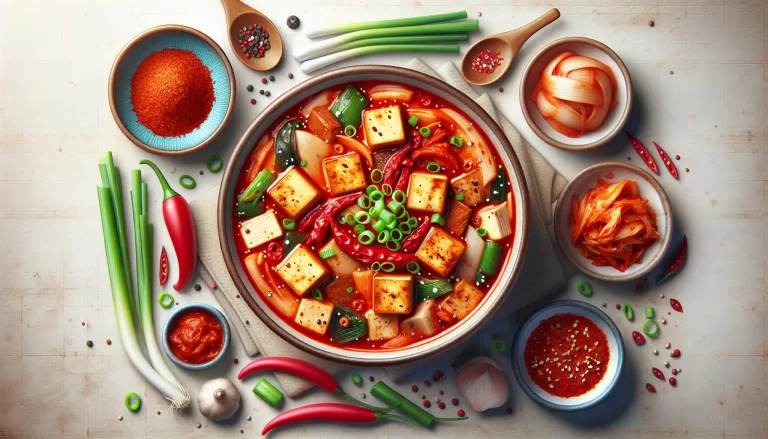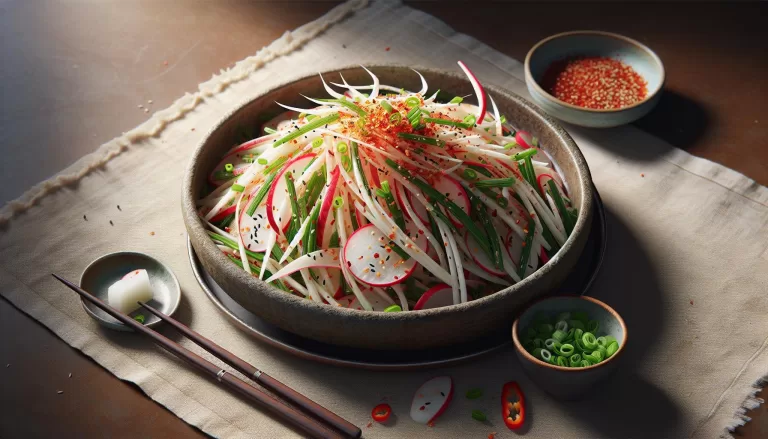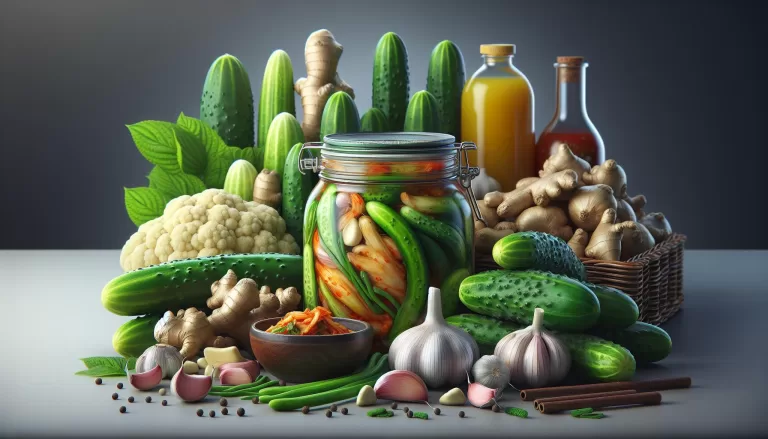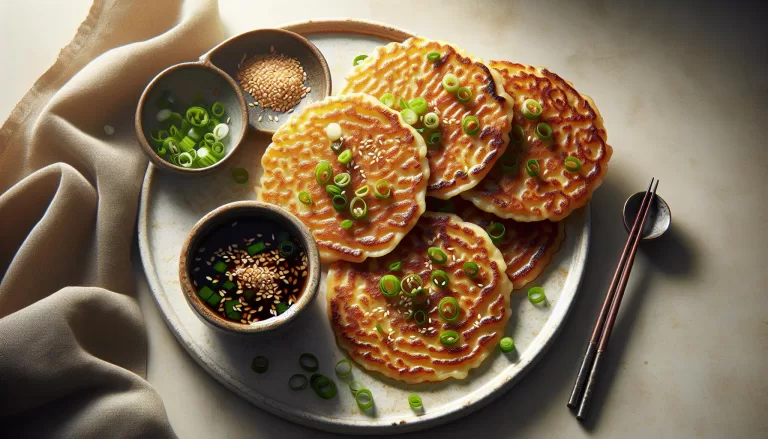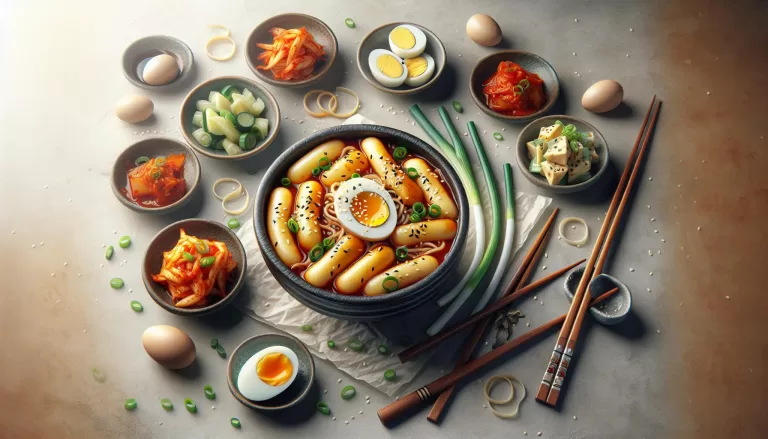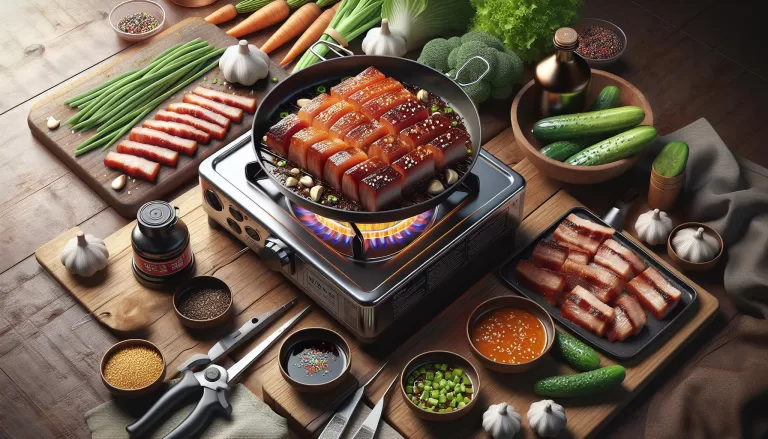Healthy and Customizable Homemade Kimchi Bibim Guksu Spicy Cold Noodles Recipe
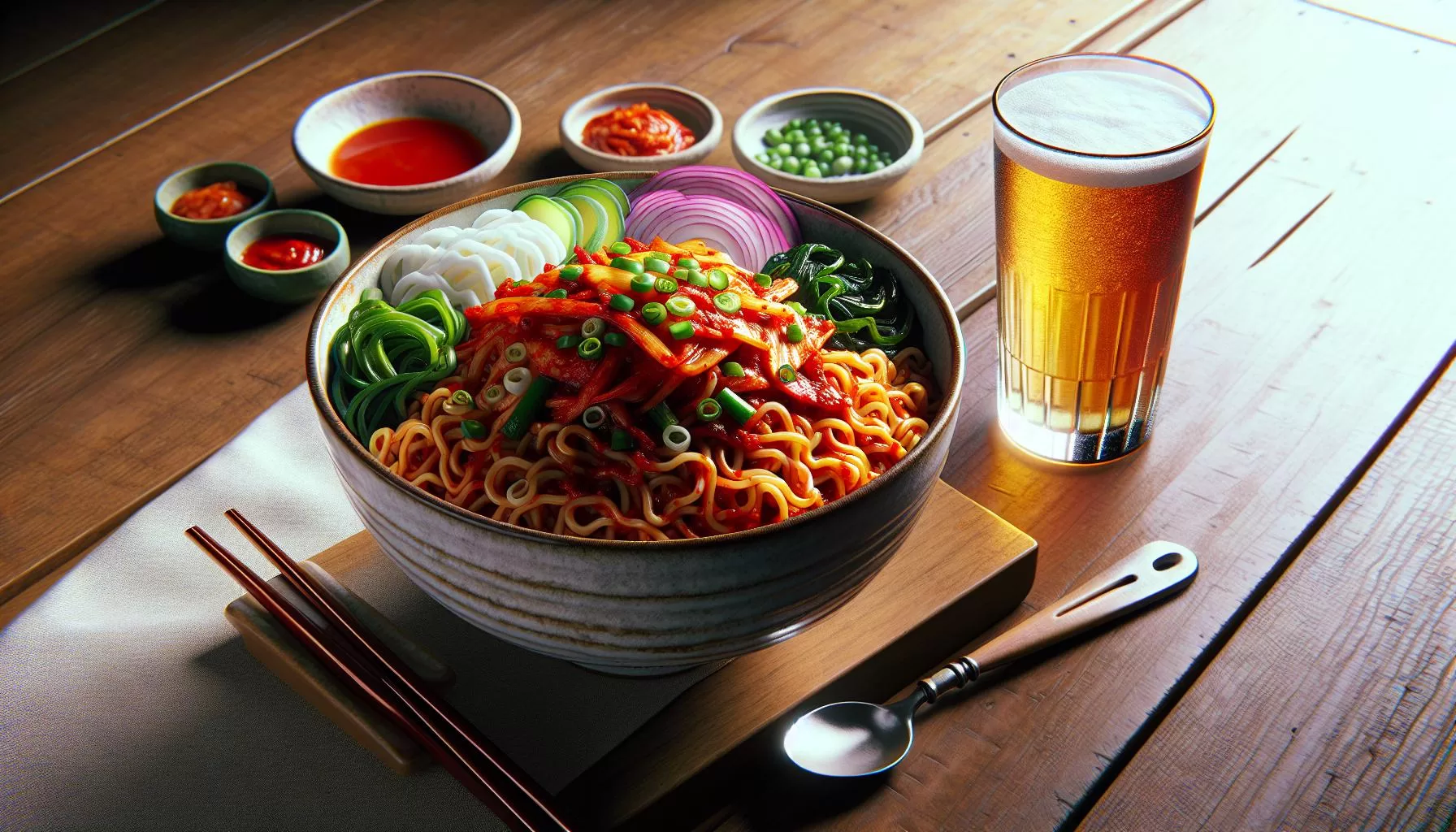
Exploring Kimchi Bibim Guksu
Kimchi Bibim Guksu sits as a favorite comfort food for many food enthusiasts. Your journey into the heart of Korean cuisine won’t be complete without this delectable cold noodle dish. Now, let’s dive deeper into creating this masterpiece from the comforts of your home. Your kitchen might just turn into the streets of Seoul!
Here’s a hint: Precision is key when cooking this dish, as discrete ingredients blend to create a harmonious symphony of flavor.
First, you’ll need 100 grams of thin wheat noodles. Boil these until soft, then rinse under cold water. Note that the texture of your noodles can greatly influence your dish. It’s important, therefore, that the noodles are cooked to perfection—not too squishy, not too hard.
Second, the sauce. Set the stage with two tablespoon of gochujang (red pepper paste). Blend in one tablespoon of soy sauce coupled with two tablespoons of sugar for that slight sweet undertone. Establish the tangy character with one tablespoon of vinegar and finally, to bring all these flavors home, put in 150 grams of well-fermented kimchi.
Third, top it off with some sliced cucumbers and boiled eggs for added texture and taste.
Want to kick things up a notch? A sprinkle of sesame seeds or perhaps a hint of mustard might just do the trick!
Here are the key facts in a nutshell:
| Ingredient | Quantity |
|---|---|
| Thin wheat noodles | 100 grams |
| Gochujang (red pepper paste) | 2 Tablespoon |
| Soy sauce | 1 Tablespoon |
| Sugar | 2 Tablespoons |
| Well-fermented kimchi | 150 grams |
| Sliced cucumbers | For topping |
| Boiled eggs | For topping |
Let’s speak numbers! Health buffs might particularly appreciate that a bowl generally contains 355 calories, with 12 grams of protein, giving you ample energy to get through the day. And with the 5 grams of fat, it’s not just all about the flavor but keeping things balanced and healthy too!
Ingredients for Homemade Kimchi Bibim Guksu

To tackle this tasty treat, you’ll need an arsenal of fresh ingredients. Refrain from substitutions where possible to maintain the authentic, Korean comfort-food feel.
Primary Components
Let’s zoom in on the primary components of Kimchi Bibim Guksu first.
- 180 grams of thin wheat noodles (Somyeon or Somyeon)
- 1/2 cup of well-fermented Kimchi
- 1 Kimchi-savvy boiled egg
- 1/2 a cucumber, julienned
A special note on Kimchi – go for a well-aged one. The sourness from a well-fermented kimchi adds a unique punch to the dish.
Flavor-building Sauce Ingredients
The magic lies with the flavorful sauce. Brace yourself – it’s like nothing you’ve tasted before!
- 3 tablespoons of Gochujang (Korean red chili pepper paste)
- 2 tablespoons of soy sauce
- 2 tablespoons of sugar
- 1 tablespoon of vinegar
You can always amp up the flavor with an extra spoonful of gochujang. Remember, the key is in the balance of flavors.
Optional Add-ons
You can perfect your dish with optional add-ons. Supercharge your Bibim Guksu with:
- Sesame seeds
- Korean mustard (Gyeoja)
Nutritional Information
Considering the nutrition side of things, this comfort food isn’t just about taste. Each bowl of your homemade Kimchi Bibim Guksu packs:
| Nutrition | Amount |
|---|---|
| Calories | 355 |
| Protein | 12 g |
| Fat | 5 g |
Step-by-Step Recipe Guide

Getting Ready
First, gather all required ingredients. Remember, using fresh, premium quality components like well-aged Kimchi and thin wheat noodles significantly enhance the overall taste and authenticity.
The Noodles
It’s time to cook your thin wheat noodles. Just like pasta, bring a large pot of water to a boil, add a pinch of salt, and cook your noodles until they reach ‘al dente’ status. Strain the noodles and run them under cold water. This trick keeps your noodles firm for the enjoyable chewiness embedded in each mouthful.
The Star: Kimchi
Take your well-aged Kimchi and prepare a blend. If the sour punch is too strong, it’s okay to drain out a little juice. Try getting creative with your blend; you could add sesame seeds or Korean mustard for a unique twist.
The Sauce
Next, whip up that flavorful sauce that sets Bibim Guksu apart. Stir together Gochujang, soy sauce, sugar, and vinegar. The secret to a delightful sauce is balancing these flavors. Taste as you go, and tweak!
Assembling the Dish
Now the fun begins; assemble your bowl of Kimchi Bibim Guksu! First layer – noodles. Then top it off with the well-coated Kimchi, adding the boiled egg and julienned cucumber. Drizzle some more sauce if you like it extra spicy. And there you have it, your homemade taste of Korea, each brimming bowl at 355 calories, showcasing 12 grams of protein and a mere 5 grams of fat.
Remember, the best results shine through with practice. So give it multiple shots, tweak around a little, and bon appétit.
Tips and Variations

Taking a plunge into this Homemade Kimchi Bibim Guksu recipe might appear a bit daunting initially, but it’s easy once you’ve got the hang of it. As with any dish, it’s not only about the process; it’s also about sprinkling in a dash of your own culinary flair, personalizing it to your liking.
Explore Variations: There’s always room to tweak and tailor to your palate. Here, let’s explore some:
- Alternative noodles: While thin wheat noodles are a traditional choice, consider experimenting with other types like soba or udon if you’re up for a varied texture. However, it’s crucial to ensure that whichever type you select, they should always be cooked to al dente.
- Spice it up: Mapping to your heat tolerance, you can always regulate the spice level. Add more Gochujang or include chilli flakes in your sauce for that extra fire.
- Playing with protein: The recipe lists boiled egg for protein, but if you are inclined towards meat, thin strips of cooked beef or shredded chicken make a great addition.
Sharing an insightful fact, did you know each serving packs a punch of approximately 355 calories, 12 grams of protein, and just 5 grams of fat? Quite the delight for health watchers, isn’t it? Here are the nutrition facts in a nutshell:
| Nutrition | Per Serving |
|---|---|
| Calories | 355 |
| Protein | 12g |
| Fat | 5g |
Serving and Enjoying Your Spicy Cold Noodles

Now that you’ve prepared your kimchi bibim guksu, let’s talk about how to savor this spicy cold noodle dish! When serving, ensure transparent bowl for a colorful, appetizing presentation. Plating is key in Korean cuisine, and the vibrant, chunky kimchi atop the slightly chilled noodles will surely leave mouths watering.
Not only is this dish visually stunning, but it also packs a nutritious punch. Kimchi, a star ingredient, is loaded with vitamins A, B, and C, plus the all-important ‘healthy bacteria’ lactobacillus kimchii. This beneficial microbe helps with digestion, adds flavor, and promotes gut health – a bonus for those caring about their gut microbiome.
Glancing at the numbers, here’s a clear view of the nutritional value per serving of your very own homemade kimchi bibim guksu:
| Per Serving | |
|---|---|
| Calories | 355 |
| Protein (g) | 12 |
| Fat (g) | 5 |
Let’s add depth to the enjoyment. Tap into your creativity and try variations. Love meat? Go ahead, add beef or chicken for an extra protein kick. If you’re a vegetarian, tofu is a fantastic protein substitute that blends seamlessly with the spicy, robust flavors. Do remember this dish is customizable; if you prefer your noodles less spicy, adjust the gochujang (Korean red chili paste) levels to your liking.
Consider pairing your noodles with Korea’s popular Soju or Makgeolli for a traditional dining experience. It’s a match made in heaven that could transport you straight to the streets of Seoul!
Your homemade kimchi bibim guksu is all about balance – flavors, nutrition, tradition with a personal touch. So go ahead, serve up and dig in.
Conclusion
So there you have it. Your journey into the world of homemade Kimchi Bibim Guksu doesn’t stop at just a recipe. It’s an adventure into a dish that’s not only delicious but also packed with nutritional benefits. You’ve learned how to tweak it to your taste, add your favorite proteins, and adjust the spice. Plus, you’ve got tips on how to elevate your dining experience with traditional Korean drinks. Remember, it’s all about balancing flavors, nutrition, tradition, and personal touches. Now, it’s time to roll up your sleeves and make your own bowl of these spicy cold noodles. Enjoy every slurp!
